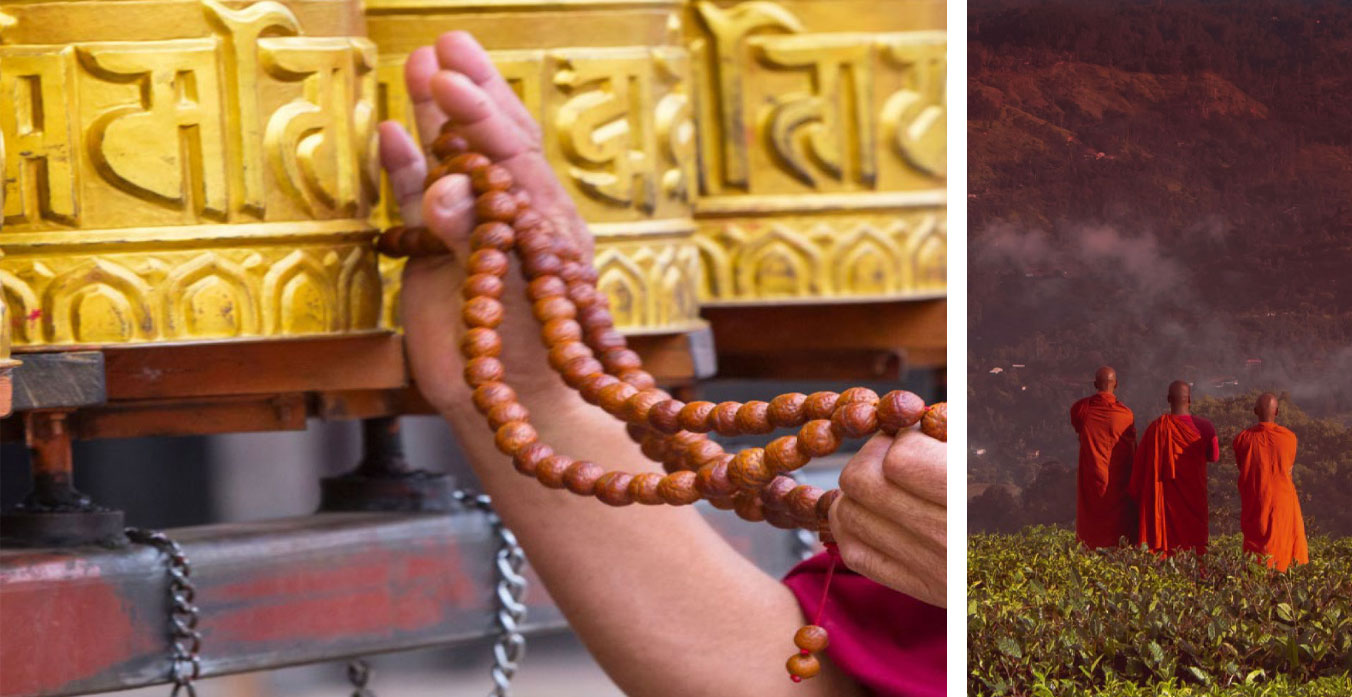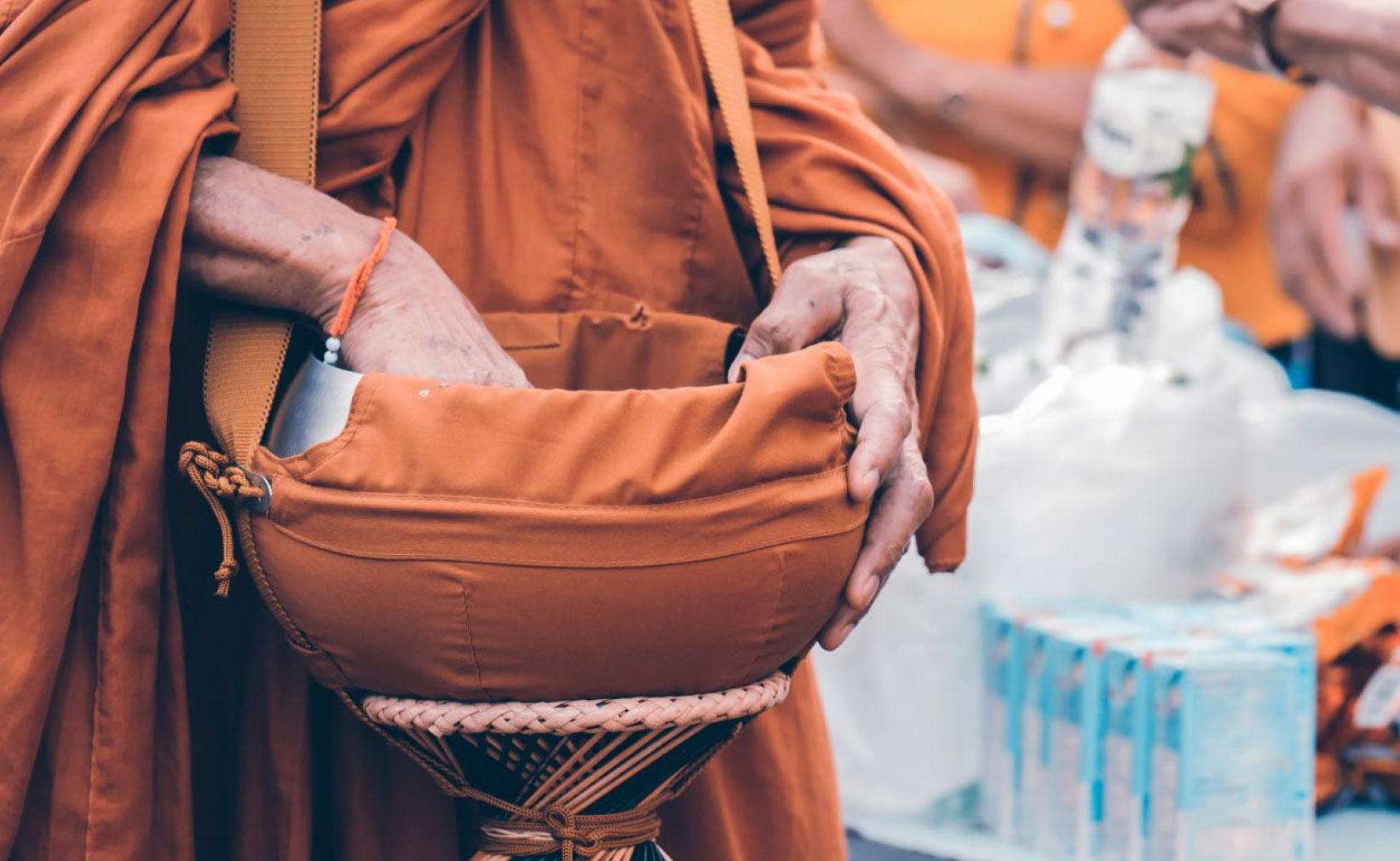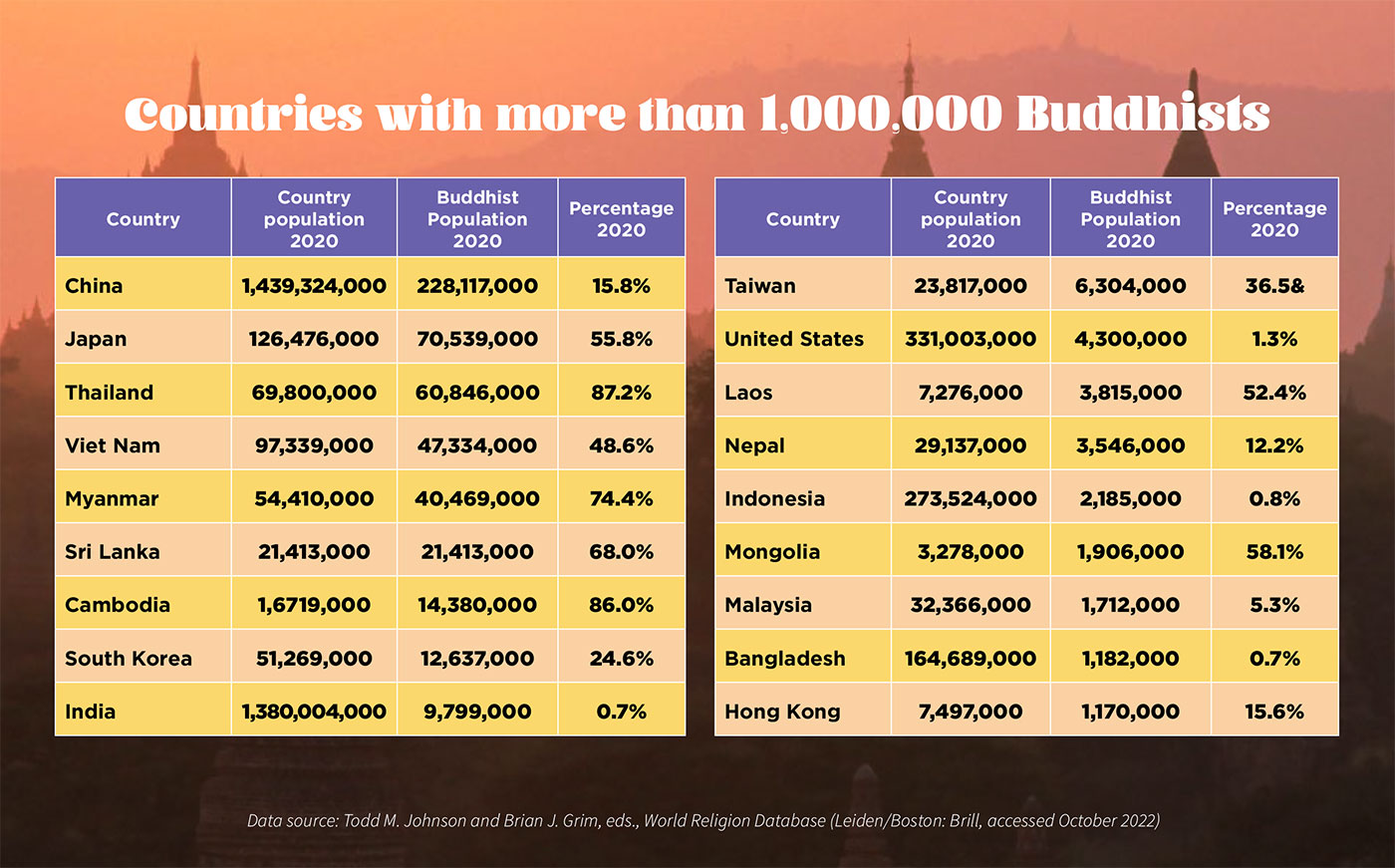「燃え尽きないでください。自分自身を燃料にして燃え続けてください。主人の召使いたちよ、元気よく期待して、注意深くありなさい。困難なときでもやめないでください。ますます熱心に祈ってください。」ローマ人への手紙 12:11-12 MSG 訳
使徒パウロによるこの1世紀の訓戒は、今日書かれてもおかしくないほどです。パンデミックによる長引く混乱、ウクライナでの戦争、中東での新たな戦争、世界の多くの地域でのイエスの信者への迫害、そして経済不況を考えると、私たちはただ手を上げて「一人の人間に何ができるだろうか」と問うのは簡単です。
パウロは答えを与えています。神の言葉に集中し、神が応えてくださることを期待し、「さらに熱心に祈りなさい」。
このガイドでは、少なくとも名目上は仏教徒である世界中の 10 億の人々に神が知られるようになるよう、具体的に祈るよう呼びかけています。2024 年 1 月 21 日から毎日、異なる場所での仏教の実践と影響について学びます。
この祈りのガイドは 30 の言語に翻訳され、世界中の 5,000 以上の祈りのネットワークを通じて配布されています。あなたは 1 億人を超えるイエスの信者とともに、仏教徒の隣人のために祈りを捧げることになります。
日々のプロフィールの多くは、特定の都市に焦点を当てています。これは意図的なものです。説明されている都市は、あなたが祈っているまさにその日に地下教会の祈祷チームが奉仕している都市と同じです。最前線での彼らの働きに対するあなたの執り成しは非常に重要です。
皆さんもぜひ私たちと一緒に参加し、「明るく期待」し、「より一層熱心に祈って」ください。
イエスは主です!

Prince Gautama was born in the southern part of modern-day Nepal in the sixth century BC. A local shaman noticed marks on the child’s body and foretold that he would grow up to be a world ruler and enlightened one. His father, desiring Gautama to be a great ruler, sought to protect him by providing a life of luxury.
At age 29, however, Gautama was exposed to the suffering outside the palace where he lived. As a result he spent six years as a wandering ascetic in search of a solution to the problem of suffering. In vain he tried various meditation techniques, hoping for insight. Finally, he resolved to sit beneath a bodhi tree until he had attained the enlightenment he sought. Though tempted by Mara (the Evil One), he persisted and eventually achieved what he believed to be a realization of supreme truth. From that point on he was considered to be the “Buddha”, which means an “Awakened One” or “Enlightened One”.
The Buddha found his original companions in the search for enlightenment and preached his first sermon to them. Unlike most religions there was no supreme deity involved. Instead he outlined the “Four Noble Truths”:
“Suffering” according to the Buddha arises due to our clinging to and craving for impermanent things that keeps us all caught in an ongoing process of death and rebirth where everything, even one’s very self, is impermanent and an illusion. The only way to get off that endless cycle of rebirths is to walk the “The Middle Path”, avoiding extremes and living with right understanding, thought, speech, conduct, livelihood, effort, mindfulness, and finally right concentration. The end-goal is not eternal communion with God, but rather—like the flame of a candle being extinguished—a state where craving is ended.
People see Buddhism as their own folk religion, even though it does not relate to a high deity. As such, it’s like a blanket that falls on existing cultures and conforms to the landscapes underneath. In Tibet, the Bon religion of shamanism was overlaid with Buddhist monasteries for meditation. In Buddhist Thailand, lay people offer monks cigarettes in their alms bowls; in Buddhist Bhutan, however, smoking is a sin. The Thai Buddhist council strictly disallows women’s ordination and forbids women from entering holy places inside temple grounds, yet Nepal and England ordain female monks. Cambodian Buddhists have no discussion in the temple concerning care for the environment, while Western Buddhists incorporate environmental activism into their practice of the dharma.
* For clarity, this guide follows the Sanskrit spelling of Buddhist terms, rather than the Pali spelling. Dharma is the Sanskrit spelling; the Pali spelling would be dhamma.

Theravada Buddhism
emerged from Sri Lanka, where the Buddha’s sermons and teachings were first canonized. It focuses on the attainment of enlightenment through personal meditation and good deeds. Myanmar, Thailand, Cambodia, and Laos follow this tradition.
Mahayana Buddhism
emerged based on texts attributed to Buddha, which taught that a bodhisattva, or enlightened being, could choose to delay entering nirvana (the ultimate spiritual goal of liberation) to deliver other sentient beings from their karmic suffering (based on a person’s past actions). This stream of Buddhism was traditionally practiced in China, Japan, Vietnam and the Korean peninsula.
Tibetan Buddhism
arose in India in AD sixth century, with a focus on accelerating enlightenment through ritual practices and visualizing heavenly bodhisattvas.
In recent years Westerners have adopted various forms of Buddhism that focus primarily on a quest for inner peace. Some have joined Theravada monasteries, seeking spiritual purification through meditation and by following the five basic rules of conduct. Others have committed themselves to a Tibetan lama (monk), study the Tibetan texts and learn chanting. Still others follow a Westernized form that mixes Asian traditions with Western notions of Buddhism. They often continue in their previous occupations and wear everyday clothes, but spend time in meditation and attend retreats.
In recent years Westerners have adopted various forms of Buddhism that focus primarily on a quest for inner peace. Some have joined Theravada monasteries, seeking spiritual purification through meditation and by following the five basic rules of conduct. Others have committed themselves to a Tibetan lama (monk), study the Tibetan texts and learn chanting. Still others follow a Westernized form that mixes Asian traditions with Western notions of Buddhism. They often continue in their previous occupations and wear everyday clothes, but spend time in meditation and attend retreats.


N/A

